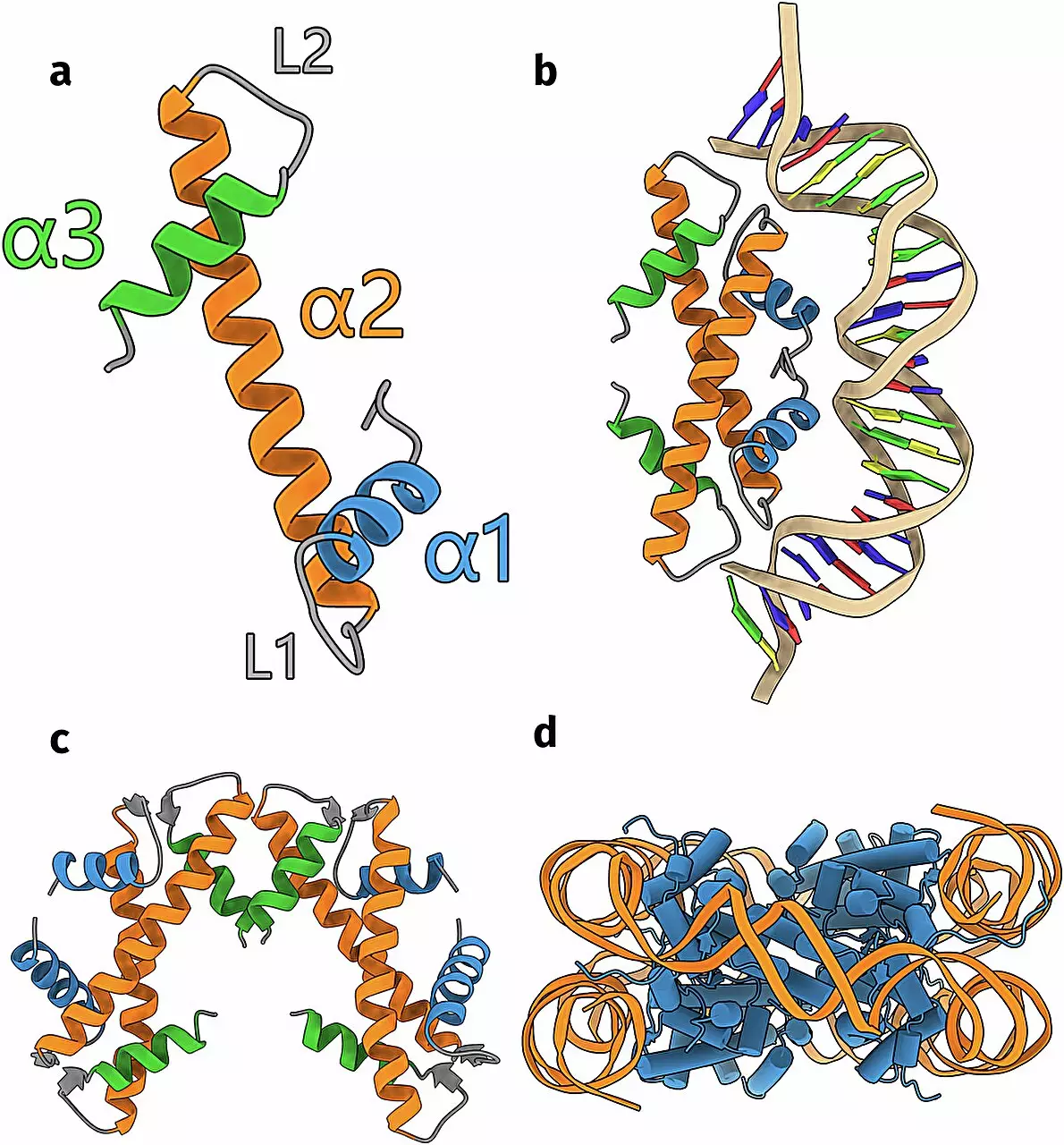Recent advancements in the study of single-celled organisms have unveiled fascinating complexities regarding histones, the proteins that serve to structure and compact DNA within these microscopic life forms. For decades, the scientific community held the assumption that histones were exclusive to complex multicellular organisms. However, groundbreaking research from Leiden University, led by Ph.D. candidate Samuel Schwab, has challenged this notion, revealing a rich diversity of histones in both bacteria and archaea.
This exciting research, as documented in the journal Nature Communications, indicates that there is not just a single type of histone in single-celled organisms, but a remarkably diverse array of at least 17 distinct groups. Each group exhibits unique structural features and potential functions, adding a new dimension to our understanding of DNA organization in simpler life forms.
DNA, a macromolecule crucial for genetic information storage, presents a significant challenge when it comes to fitting within the confined space of a single cell. This is where histones come into play; they function by packaging the long strands of DNA into manageable structures called nucleosomes. Schwab emphasizes the importance of these proteins, stating that they are critical for the structural integrity and organization of DNA within cells.
The study of histones in single-celled organisms began with an initial focus on archaea after their discovery in this group. As research expanded, scientists were astonished to find histones also present in bacteria, further complicating the historical paradigm. With each new finding, researchers began to suspect that the landscape of histone diversity in unicellular life was far greater than previously acknowledged.
One of the pivotal tools that have revolutionized this research is AlphaFold, an advanced artificial intelligence algorithm capable of predicting protein structures from genetic sequences. This breakthrough in computational biology allowed Schwab and his team to sift through an extensive protein database, identifying more than 6,000 DNA sequences that could correspond to yet undiscovered histone types in single-celled organisms.
With the predictive capabilities of AlphaFold combined with resources from the Leiden supercomputer facility, researchers were able to analyze and predict the structures of these elusive histones, laying the groundwork for future studies. By matching their findings with laboratory experiments, the researchers confirmed that the predicted structures were strikingly accurate.
The research did not stop at merely identifying new histone structures; Schwab’s team ventured further to hypothesize the potential roles these various proteins might play in DNA behavior. The findings suggest that while some histones wrap around DNA, others may facilitate DNA folding or create loops to bridge disparate DNA regions. This opens the door to a deeper understanding of genetic regulation and expression in unicellular organisms.
Adding another layer of intrigue, some identified histones displayed a tendency to associate with cellular membranes rather than DNA itself, indicating alternative functions that warrant further investigation. This discovery hints at a more complex and nuanced view of how genetic material is organized and regulated at the cellular level.
The work conducted by Schwab and his colleagues holds significant implications for our comprehension of DNA organization across different life forms. As Remus Dame, the research supervisor, articulates, this study not only enriches our knowledge of evolutionary biology but also aids in interpreting various DNA data. As scientists continue to explore these dimensions, it becomes clear that our understanding of cellular processes remains in its infancy.
Further research into the complexities of histones in unicellular organisms promises to shed light not only on basic biological principles but also on the evolutionary pathways that have shaped life on Earth. With so much yet to be discovered, the landscape of molecular biology is once again marked by the profound mysteries of life waiting to be unraveled.

